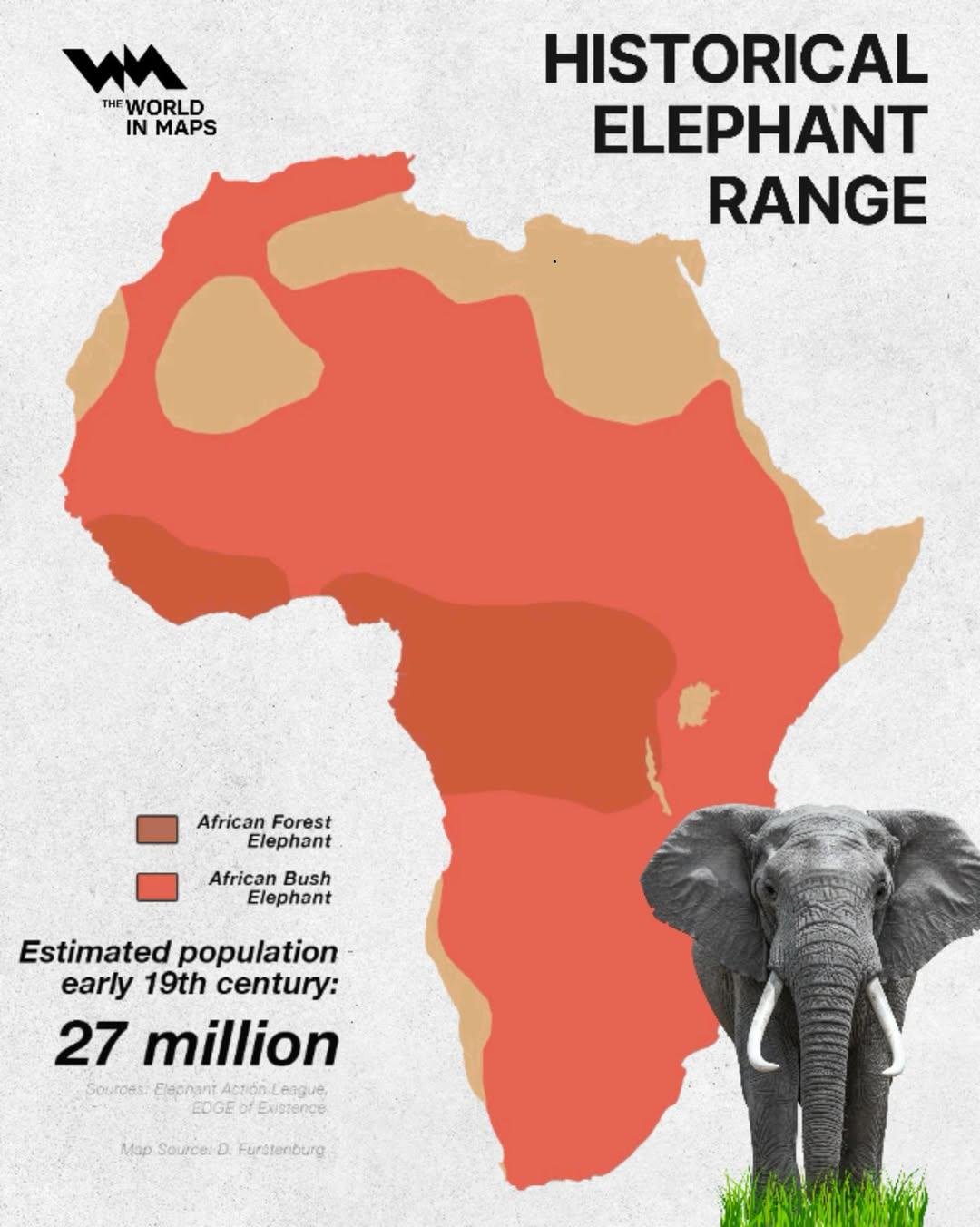Historical African Elephant Range Map


Alex Cartwright
Senior Cartographer & GIS Specialist
Alex Cartwright is a renowned cartographer and geographic information systems specialist with over 15 years of experience in spatial analysis and data...
Geographic Analysis
What This Map Shows
The "Historical African Elephant Range Map" provides a visual representation of the geographical distribution of African elephants across the continent at different points in history. This map highlights the vast territories once inhabited by these majestic creatures, illustrating how their range has shifted over time due to various factors such as climate change, human encroachment, and conservation efforts. It’s a poignant reminder of the elephants' historical presence and the changes they have faced, sparking curiosity about their current status and future prospects.
Deep Dive into African Elephant Habitats
African elephants, the largest land mammals on Earth, once roamed freely across a broad expanse of Africa, from the savannas of East Africa to the dense forests of the Congo Basin. Their migratory patterns were influenced by seasonal rainfall, availability of food, and water sources. Interestingly, elephants are known for their remarkable ability to adapt to various ecosystems, making them a keystone species in many habitats.
In the past, elephants thrived in areas that now face significant threats. For instance, the Sahara Desert was not always the arid landscape we see today. During wetter periods, it supported diverse wildlife, including elephants. As climate patterns shifted, so did their habitats, leading to a gradual reduction in their range. Today, elephants primarily inhabit protected areas, national parks, and reserves where conservation efforts are more robust.
What's fascinating is that the African elephant is divided into two subspecies: the African bush elephant and the African forest elephant. The bush elephant is typically found in savanna ecosystems, while the forest elephant prefers dense, tropical rainforests. Studies estimate that the population of African elephants has plummeted by over 60% in the past few decades due to poaching and habitat loss, which is a stark contrast to their historical ranges shown in this map.
Elephants play a crucial role in their ecosystems. They help maintain the structure of savannas and forests by uprooting trees and creating pathways, which in turn benefits other species. Their foraging habits help disperse seeds, promoting plant diversity. This intricate relationship within their habitats emphasizes the importance of conserving these magnificent animals, not just for their survival, but for the health of the ecosystems they inhabit.
Regional Analysis
Examining the map, we can see distinct regional patterns in the historical range of African elephants. In East Africa, countries like Kenya and Tanzania once hosted large herds that traveled across vast distances. The Serengeti ecosystem, for instance, was known for its massive elephant populations, driven by seasonal migrations in search of food and water.
Conversely, West Africa has faced a decline in elephant populations due to intensive agriculture and human settlements. Countries like Ivory Coast and Ghana, which were once part of the elephants' historical range, now have minimal populations due to habitat fragmentation and poaching.
Interestingly, Southern Africa has seen a more stable elephant population, particularly in nations like Botswana, where conservation efforts have been relatively successful. Botswana is home to a significant proportion of the continent's remaining elephants, showcasing how effective management and protective legislation can positively impact wildlife conservation.
Significance and Impact
Understanding the historical range of African elephants is crucial for several reasons. Firstly, it highlights the dramatic changes these animals have undergone, reflecting broader environmental issues like climate change and human activity. Have you noticed that as human populations expand, natural habitats shrink? This trend poses a significant threat not only to elephants but to biodiversity as a whole.
Moreover, the decline in elephant populations impacts local communities, economies, and ecosystems. Elephants are a draw for ecotourism, which can provide sustainable income for regions that prioritize conservation. However, as their numbers dwindle, so does the potential for ecotourism revenue, which can lead to a vicious cycle of poverty and further habitat destruction.
Looking to the future, the current trends suggest a critical need for more robust conservation strategies. Projections indicate that if current trends continue, we may see further fragmentation of their populations, leading to isolated groups that struggle to survive. Conservationists advocate for creating wildlife corridors to connect fragmented habitats, allowing elephants to migrate safely and maintain genetic diversity.
In conclusion, the historical African elephant range map serves not only as a reminder of their past but also as a call to action for their future. By understanding and addressing the factors that have led to their decline, we can work towards preserving these incredible creatures for generations to come.
Visualization Details
- Published
- August 12, 2025
- Views
- 154
Comments
Loading comments...